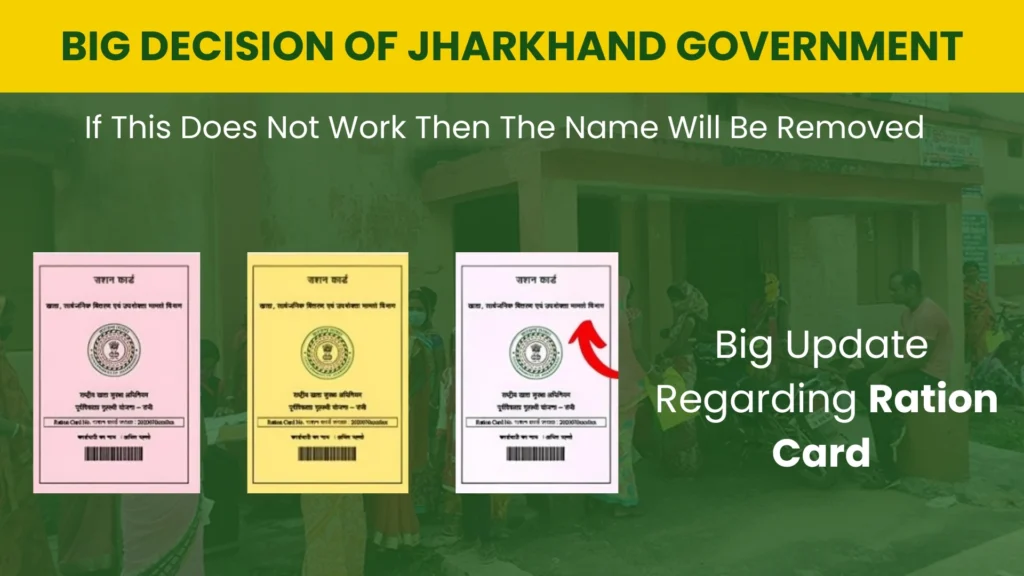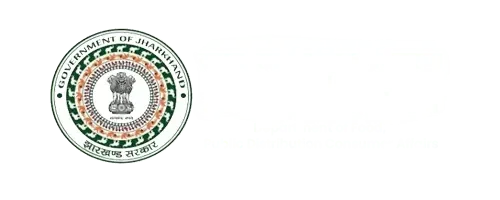
Every evening, Meera Devi of Ranchi checks the official Jharkhand Aahar PDS website to confirm her family’s monthly grain allocation. Just a few years ago, she had to travel repeatedly to the Block Office to track her ration card status. Today, a single mobile search tells her everything she needs to know.
This detailed guide explains how PDS works, how to apply for or update your ration card Jharkhand, and how to use the portal for free food schemes. Whether you are a new applicant, a migrant worker, or simply curious about government support, this article will walk you through the entire process.
Understanding Aahar PDS and Its Importance
The Aahar Public Distribution System (PDS) is the digital platform through which Jharkhand delivers subsidized grains and essential supplies to its citizens. Operated by the state food and civil supplies department, it integrates with the ration card Jharkhand database and publishes real-time reports of allocations, distributions, and beneficiary details.
Key benefits of the Jharkhand Aahar PDS portal:
- Transparent tracking of monthly food distribution by district.
- Online application for new ration cards and corrections.
- Real-time grievance filing and status updates.
- Access to e-KYC and One Nation One Ration Card (ONORC) information.
This system has improved efficiency, reduced corruption, and given citizens more control over their entitlements.
Entitlements Under NFSA
Under the National Food Security Act (NFSA), Jharkhand provides:
- Priority Household (PHH): 5 kg of foodgrain per person each month at subsidized rates.
- Antyodaya Anna Yojana (AAY): 35 kg of foodgrain per household each month for the poorest families.
- Special Categories: Pregnant women, children, widows, and disabled persons may receive additional benefits through linked nutrition programs.
All entitlements are displayed on the Jharkhand Aahar PDS portal to ensure transparency.
Key Features of the Online Portal Aahar PDS
The state’s official portal aahar.jharkhand.gov.in provides several useful tools:
- Beneficiary Search: Check ration card details by Aadhaar or registered mobile number.
- Monthly Reports: View allocation and distribution data for each district.
- Downloadable Forms: Apply for a new ration card, transfer an existing one, or request corrections.
- e-KYC Status: Track Aadhaar-based verification to avoid exclusion.
- ONORC Facility: Access entitlements from any participating state if you migrate for work.
The portal also displays helpline numbers and publishes public notices about upcoming verification drives.
e-KYC: Why It Matters
Electronic Know Your Customer (e-KYC) verification links each household member’s Aadhaar to the ration card Jharkhand record. Without completing e-KYC, beneficiaries risk removal from the active list.
If biometrics fail, you can request OTP-based verification or manual approval from your local Block Supply Officer. Mobile e-KYC camps are frequently organized to assist elderly and disabled citizens.
One Nation One Ration Card (ONORC)
ONORC allows beneficiaries to collect ration from any participating state. For example, a worker who migrates from Jharkhand to Delhi can access their entitlement by showing their ration card Jharkhand at a local Fair Price Shop. This portability ensures uninterrupted access to food even when families move for employment.
How to Check Ration Card Status Online
You can easily track your ration details on the Jharkhand Aahar PDS portal:
- Visit the official website.
- Click on “Beneficiary Search.”
- Select your district and block.
- Enter Aadhaar or registered mobile number.
- View ration card details, entitlements, and monthly supply records.
Applying for a New Ration Card
If you do not have a ration card yet:
- Download the application form from the portal.
- Provide details of all family members, Aadhaar numbers, and proof of residence.
- Attach supporting documents such as birth certificates or voter IDs.
- Submit the form online or at the nearest Common Service Centre (CSC).
- Track your application status regularly on the portal.
Processing typically takes two to four weeks, depending on district workload.
Using Digital Tools at Fair Price Shops
Jharkhand has introduced electronic Point of Sale (ePOS) devices at Fair Price Shops (FPS). These devices authenticate beneficiaries through fingerprints or OTP codes and generate instant receipts. Always collect a printed or handwritten receipt as proof of grain collection, especially during device failures.
Common Issues and Quick Solutions
| Issue | Suggested Action |
| Name missing from beneficiary list | File a grievance online and visit the Block Supply Office with Aadhaar and proof of residence. |
| e-KYC failure | Request OTP-based verification or manual approval at CSC or FPS. |
| Device malfunction at FPS | Take a written receipt and lodge a complaint on the portal. |
| Transfer to another district | Submit a transfer request form on the portal or at the block office. |
Latest Updates and Awareness Campaigns
The Jharkhand government regularly launches awareness drives to improve participation:
- Digital Literacy Camps: Teach rural families how to use the portal on smartphones.
- Mobile e-KYC Vans: Provide doorstep verification for elderly or disabled beneficiaries.
- SMS Alerts: Beneficiaries receive notifications about ration allocation and collection deadlines.
These initiatives ensure that even remote communities stay connected to the Jharkhand Aahar PDS system.
Real-Life Success Stories
- Ramu’s Relief: Ramu from Dhanbad faced repeated biometric failures. A mobile e-KYC camp helped update his Aadhaar, and he now receives his monthly ration without trouble.
- Poonam’s Portability: Poonam, a daily-wage worker in Delhi, continues to collect subsidized grains using the ONORC feature of Jharkhand Aahar PDS.
- Shanti Devi’s Support: At 70, Shanti Devi no longer travels long distances thanks to doorstep ration delivery arranged through the grievance mechanism.
- Rashid’s Recovery: After his name was wrongly removed, Rashid used the portal’s grievance system and regained access within ten days.
Monitoring and Transparency
Monthly district reports display:
- Allocation versus distribution data.
- Beneficiary coverage.
- e-KYC completion rates.
These public dashboards empower citizens and NGOs to monitor government performance and highlight discrepancies.
Best Practices for Beneficiaries
- Keep Aadhaar and mobile numbers updated.
- Save digital receipts or screenshots of every transaction.
- Check the portal monthly to confirm entitlements.
- Maintain a printed folder of all documents for quick verification.
Frequently Asked Questions (FAQs) About Aahar PDS in Jharkhand
Future Improvements
The state plans to integrate artificial intelligence for fraud detection, introduce push notifications for every distribution, and enable multilingual support on the portal. These upgrades aim to make the Jharkhand Aahar PDS system even more accessible and transparent.
Conclusion
From remote villages to bustling towns, Jharkhand Aahar PDS has changed how families secure their food supply. Like Meera Devi in Ranchi, thousands of households now track their ration status with a few clicks instead of multiple office visits.
Stay proactive: complete e-KYC, monitor the portal regularly, and save every receipt. With careful documentation and timely updates, every household can enjoy secure, uninterrupted access to subsidized food in Jharkhand.
For official government services, please visit here: aahar.jharkhand.gov.in
Learn more about this service visit this Page Aahar Jharkhand
Want to learn more about girl-empowerment schemes and support programs? Visit Ladki Bahin Yojana for full details.
